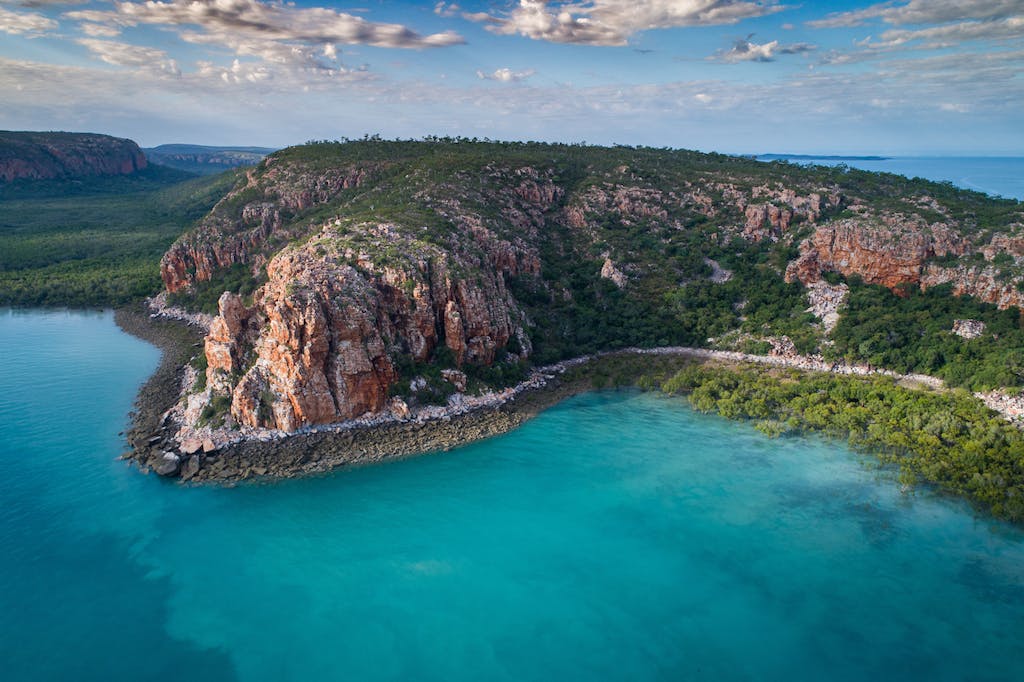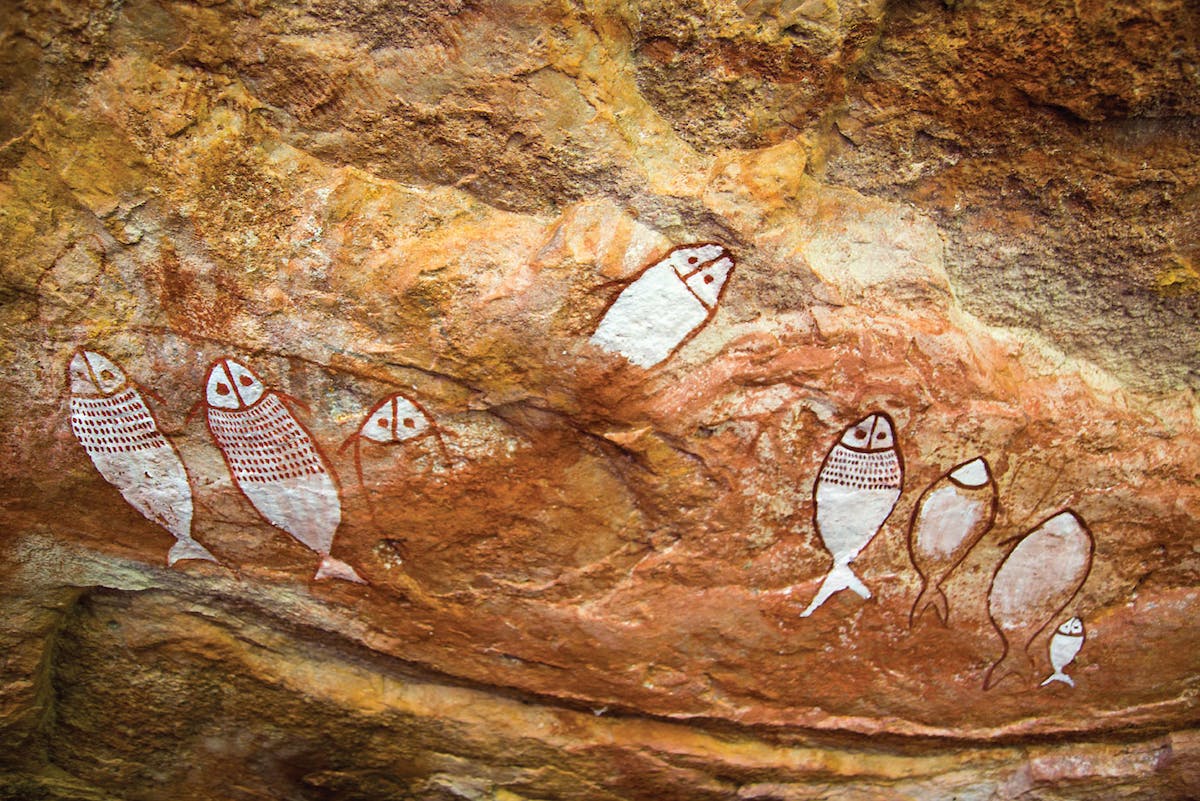Rock Artists: Tracking Aboriginal Art in the Kimberley
Australia’s extreme northwest corner is home to some of the oldest and most prolific collections of rock art in the world. From simple hand stencils to elaborate figures wearing headdresses and tassels, these ancient Aboriginal paintings provide a peek into quotidian life as it occurred in the past.
In caves and on rock walls across the Kimberley, still-vibrant art from long ago depicts plants, animals, tools and weapons. They also offer an opportunity to learn more about the rituals and practices of Indigenous peoples, allowing these cultures to speak across time.
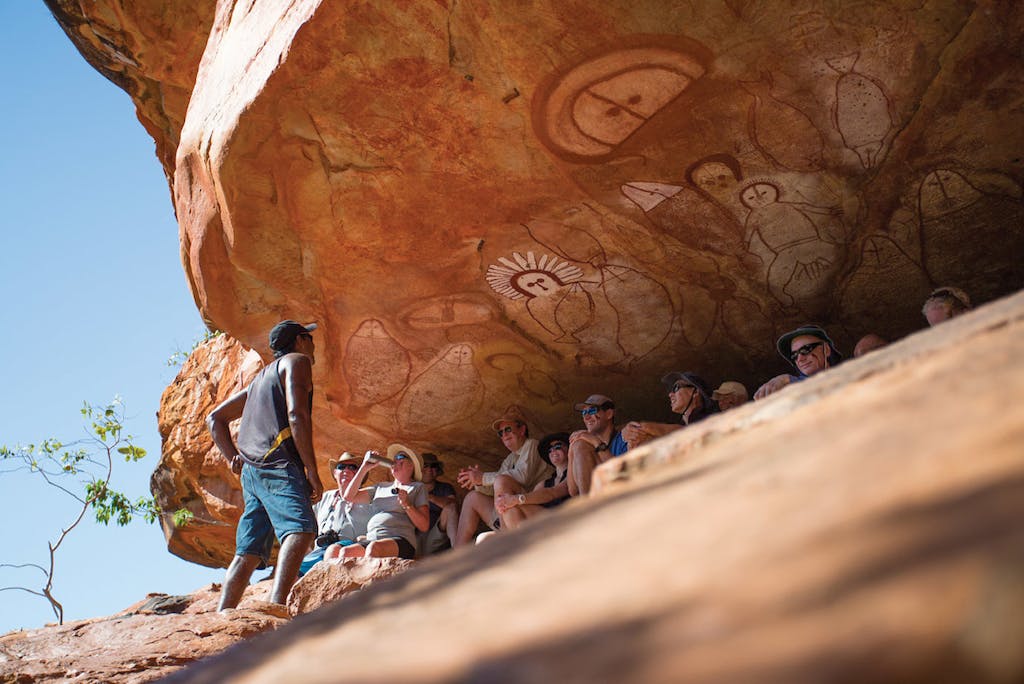
The Hidden History of the Ancient Kimberley
Upon reaching the Kimberley approximately 50,000 years ago, the earliest Aboriginal explorers started decorating the sandstone walls with exquisite rock art. Some of the paintings show human forms hunting or dancing, while others depict sailors and ships.
The land of the Wunambal Gaambera people, which unfurls over 6.17 million acres (2.5 million hectares) in the north Kimberley, is home to tranquil Swift Bay, or Warrabii West. “Two sites at Swift Bay are close together but depict totally different styles,” says Silversea guest lecturer Tim Harvey. “One site contains mostly Gwion figures. The other, more recent site, has large Wandjina figures on the ceiling, as well as numerous fish, ducks, turtles and crocodiles.”
According to Harvey, this location is the perfect place to compare the two principal Kimberley rock art styles, which are Wandjina and Gwion (also called Bradshaw) art. The large, wide-eyed Wandjinas are spirit figures drawn on thousands of cliffs and cave walls in the Kimberley. They came to both national and international prominence when they featured in the Sydney Olympic Opening Ceremony.
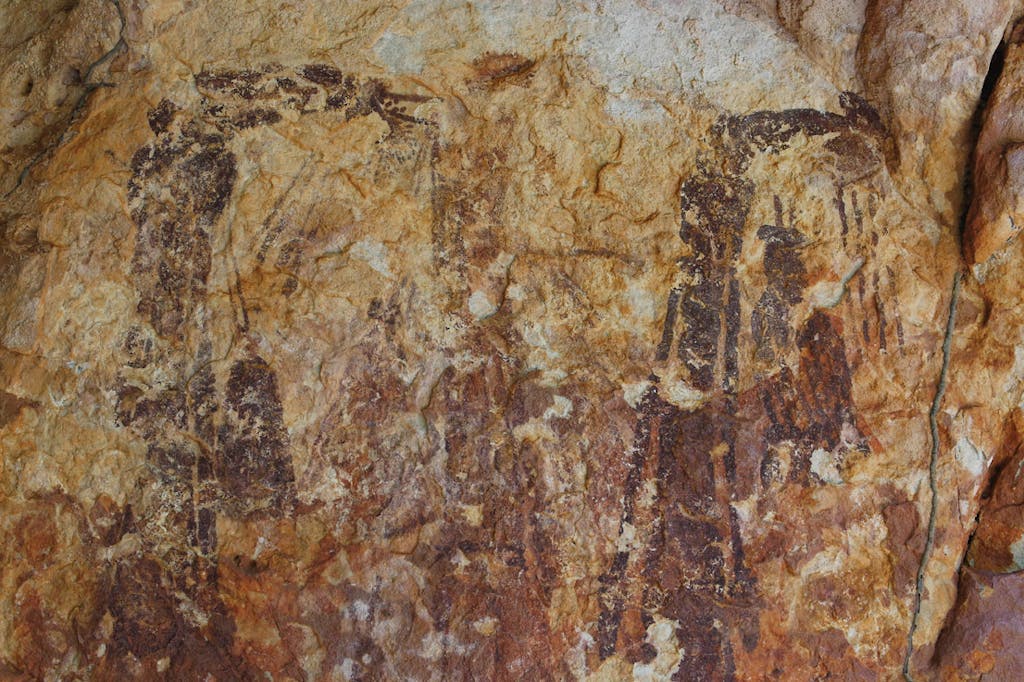
Although Aboriginal people have known about these sites for thousands of years, George Grey is credited with the earliest European recording of Wandjina rock art, made during his expedition of 1838. The unique Gwion art was first seen by Western eyes in 1891 by pastoralist Joseph Bradshaw.
Over millennia, the Aboriginal Australians had developed a complex belief system. Central to this belief is the concept of the “Dreamtime,” which is broadly understood as the time when spiritual ancestors created the world and everything that exists.
Wandjina figures are very much part of the Dreamtime stories, explains Harvey, one of which is that people did not paint these figures. It’s believed that Wandjinas put themselves on the rock after they had finished creating the landscapes to remind people of their power.
Gwion art tends to depict dynamic, stick-like figures with stylistic accouterments such as sashes and headdresses, says Harvey. “The figures display action, whereas, by comparison, many of the Wandjinas appear static.”
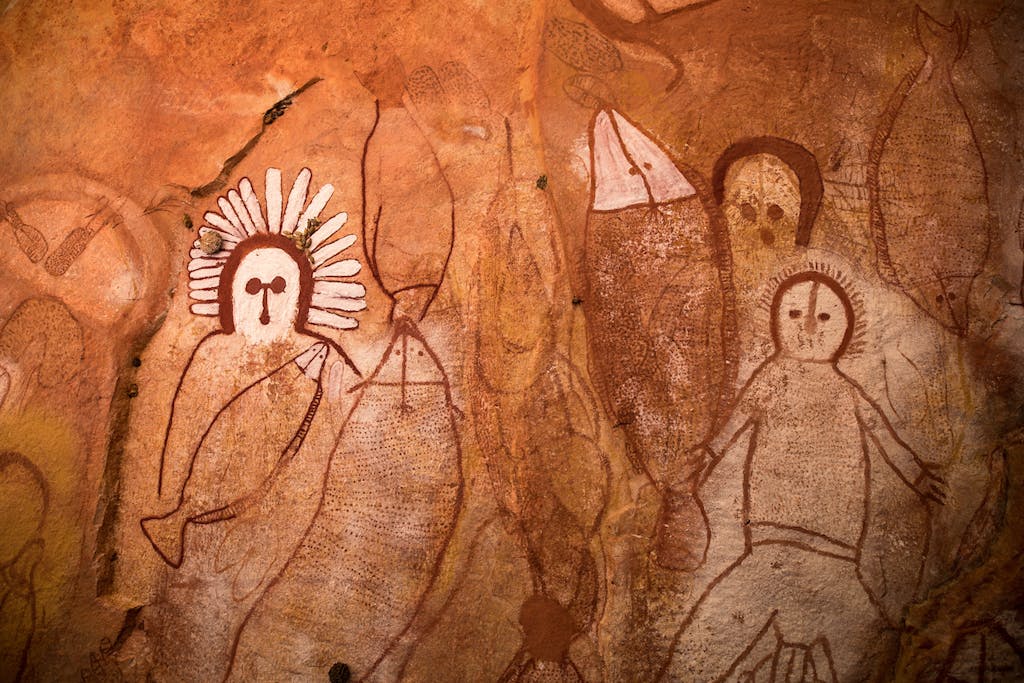
Wasp Nests Help Unlock Art Secrets
Researchers who study Aboriginal rock art face a significant challenge— definitively dating these pieces. From 2013 until 2016, Dr. June Ross from the University of New England, Dr. Kira Westaway from Macquarie University, together with her colleagues and Aboriginal community members, analyzed art in over 200 sites in the northwest Kimberley.
In their study published in the scientific journal PLOS ONE, the researchers explain how they used a technique known as Optically Stimulated Luminescence (OSL) to date wasp nests overlying the artworks. The method measures the period since grains of sand, which are found within mud wasp nests, were last exposed to sunlight. By learning when the nests were constructed, researchers can use the resulting age to confidently claim that the artist painted the image before the mud wasp created its nest. OSL results confirmed that the art was indeed ancient, providing evidence that art has a minimum age estimate of more than 16,000 years.
For many Aboriginal traditional owners, however, pinpointing the exact date of when the work was created is not of the utmost importance. “It is the images that are important,” states Harvey. “So, while many Aboriginal people want to protect the images and work with academics to document them when they were painted is not considered a priority.”

Layers of Mystery Remain
One thing that intrigues Harvey most about Kimberley rock art is the type of instruments used to create the works. “Some of the paintings have obviously been done with a fine brush of some sort,” he explains. “While others are much cruder with paint applied by a stick or fingers.” Most of the paints used came from minerals, such as ochre (red, brown, yellow, orange), China clay (white) and charcoal (black). The artists might have mixed minerals with resins from an unknown source, but Harvey believes they possibly came from plants.
Back at the tranquil Swift Bay, if guests want to admire some of the most impressive art in the area, they need to wriggle into a tight space and lie on their backs. “There is a site that has several Wandjina figures, including a huge figure painted on a cave ceiling,” says Harvey. “The ceiling is only about a meter above your head, and the figure can only be viewed by lying down.” Fortunately, there’s a comfortable ship to return to after exploring this unique corner of the Kimberley, says Harvey. He’s crossing off the days until he can once again return to witness these ancient galleries.
